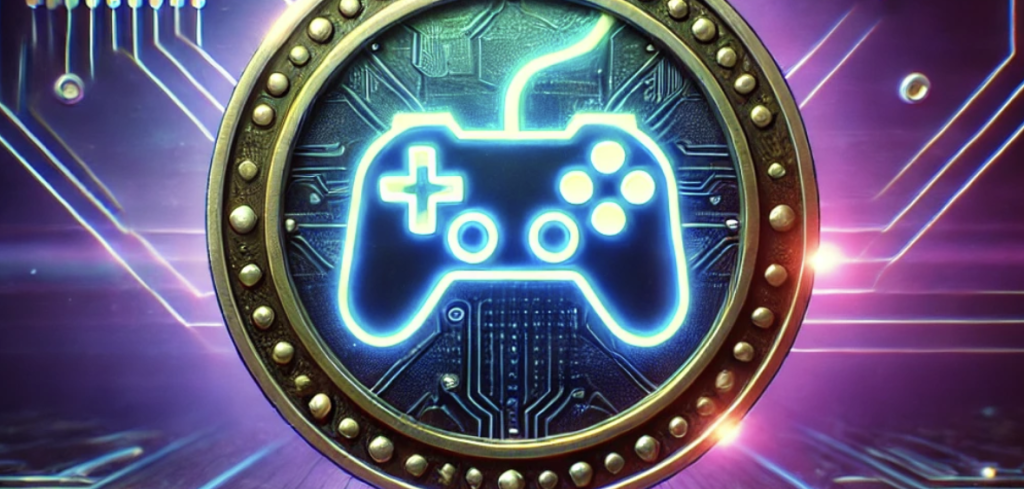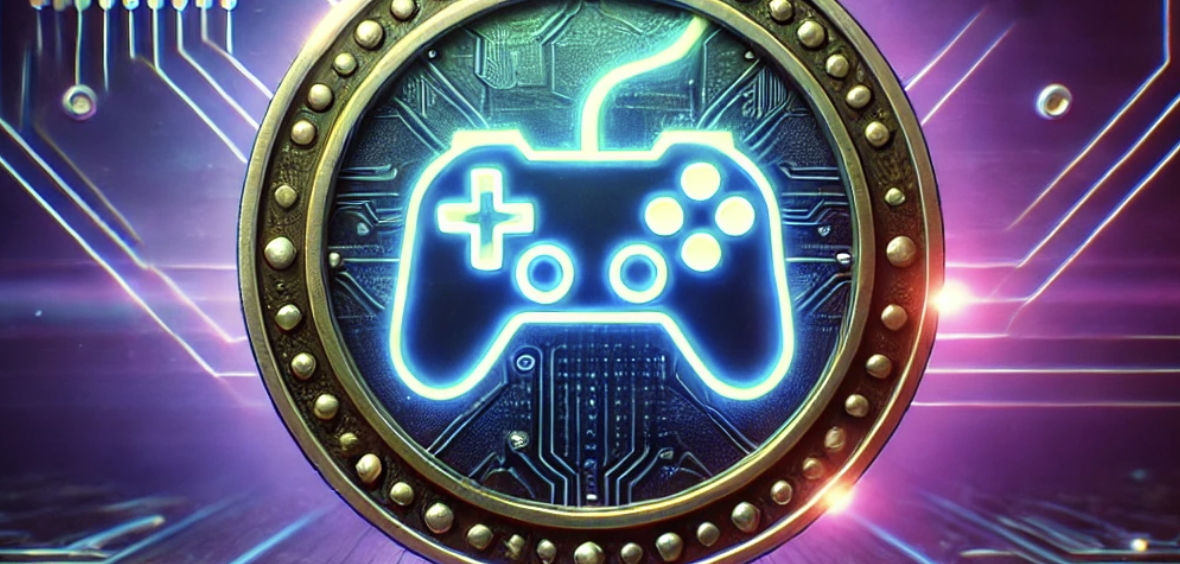Introduction
Gaming tokens are transforming the gaming industry, introducing play-to-earn (P2E) models, true digital ownership, and decentralized economies. Unlike traditional games where assets are controlled by developers, blockchain gaming allows players to own, trade, and monetize their in-game items using cryptocurrencies.

With NFTs, DeFi integrations, and metaverse developments, gaming tokens have become one of the most promising sectors in crypto. Let’s explore the top 10 gaming tokens, their unique features, and why they’re shaping the future of gaming! 🚀
1. Axie Infinity (AXS) – The Play-to-Earn Pioneer
Overview
Axie Infinity is a blockchain-based monster-battle game inspired by Pokémon. Launched in 2018 by Sky Mavis, it was one of the first games to popularize the play-to-earn (P2E) model, allowing players to earn AXS and SLP (Smooth Love Potion) tokens through gameplay.
Key Features:
✅ Play-to-Earn Model – Players earn tokens by battling, breeding, and trading Axies.
✅ NFT-Based Assets – Each Axie is an NFT with unique traits.
✅ Governance & Staking – AXS holders can stake tokens and participate in governance decisions.
Gameplay & Mechanics
- Players collect, breed, and train Axies to compete in turn-based battles.
- Axies can be sold or rented in the Axie Infinity Marketplace for real-world earnings.
- AXS is used for governance, while SLP is used for breeding Axies.
Tokenomics & Future Potential
- AXS has a max supply of 270 million, with rewards distributed through staking and gameplay.
- The game’s shift to Axie Infinity: Origins aims to improve sustainability.
- Despite a decline in 2022, Axie Infinity remains one of the most influential blockchain games.
2. The Sandbox (SAND) – The Creator’s Metaverse
Overview
The Sandbox is a decentralized metaverse that allows users to create, own, and monetize their digital experiences. Built on Ethereum, it utilizes SAND tokens for governance, transactions, and staking.
Key Features:
✅ Virtual Land Ownership – Users buy, sell, and develop LAND NFTs.
✅ User-Generated Content – Players create and monetize their own games.
✅ Major Partnerships – Collaborations with Snoop Dogg, Atari, Adidas, and The Walking Dead.
Gameplay & Mechanics
- Players use VoxEdit to create 3D NFT assets.
- The Game Maker tool allows users to design and monetize interactive games.
- SAND tokens facilitate purchases, staking, and governance voting.
Tokenomics & Future Potential
- SAND has a max supply of 3 billion tokens.
- The Sandbox’s virtual real estate boom has driven LAND sales past $100 million.
- As metaverse adoption grows, The Sandbox is poised to be a leader in virtual world development.
3. Decentraland (MANA) – The Virtual Reality Pioneer
Overview
Decentraland is a 3D virtual world powered by MANA tokens, where players can buy land, trade NFTs, and participate in digital experiences.
Key Features:
✅ NFT-Based Virtual Real Estate – Players buy, sell, and build on LAND parcels.
✅ DAO Governance – MANA holders vote on project developments.
✅ Metaverse Events – Hosted Metaverse Fashion Week, concerts, and corporate meetings.
Gameplay & Mechanics
- Users explore Decentraland with avatars and interact with NFT-based structures.
- LAND parcels can be developed into businesses, galleries, or social hubs.
- MANA is used for governance, purchases, and staking rewards.
Tokenomics & Future Potential
- MANA has a supply of 2.19 billion tokens.
- With big brands entering the metaverse, Decentraland’s growth is expected to continue.
4. Gala Games (GALA) – The Blockchain Gaming Ecosystem
Overview
Gala Games is a decentralized gaming platform that gives players ownership of their in-game assets through NFTs and blockchain technology. Unlike a single game, Gala Games is a full ecosystem offering multiple blockchain-based games.
Key Features:
✅ Diverse Game Library – Includes Town Star, Mirandus, Spider Tanks, and more.
✅ Player-Owned Economy – Players fully own their in-game assets as NFTs.
✅ Gala Nodes – Players can run nodes to support the ecosystem and earn GALA tokens.
Gameplay & Mechanics
- Each game within the Gala ecosystem has its own economy powered by GALA tokens.
- Players earn GALA and NFTs through in-game achievements, competitions, and trades.
- Gala Nodes allow users to contribute to game hosting and governance while earning rewards.
Tokenomics & Future Potential
- GALA has a circulating supply of around 7 billion tokens, with a max supply of 50 billion.
- Partnerships with major studios and blockchain integrations position Gala as a future leader in blockchain gaming.
- As blockchain gaming expands, Gala Games’ decentralized approach could attract mainstream game developers.
5. Enjin Coin (ENJ) – The NFT Gaming Backbone
Overview
Enjin Coin (ENJ) powers blockchain-based gaming economies by enabling the creation of NFTs backed by real value. Game developers use ENJ to mint in-game assets as NFTs, ensuring true digital ownership.
Key Features:
✅ Backed NFTs – Every Enjin NFT is backed by a specific amount of ENJ, ensuring intrinsic value.
✅ Cross-Game Compatibility – Enjin’s Multiverse allows NFT assets to be used across multiple games.
✅ Developer-Friendly Tools – Enables game developers to integrate blockchain assets easily.
Gameplay & Mechanics
- Players can earn, buy, sell, or trade ENJ-backed NFTs, ensuring a transparent in-game economy.
- Developers can tokenize weapons, armor, skins, and collectibles as NFTs.
- Enjin’s “Beam” system allows instant NFT distribution via QR codes.
Tokenomics & Future Potential
- ENJ has a total supply of 1 billion tokens.
- Enjin is already used in Minecraft-like metaverse games, creating real adoption opportunities.
- With the rise of Web3 gaming and cross-game NFTs, Enjin’s Multiverse concept could be a game-changer.
6. Illuvium (ILV) – The Open-World RPG of Blockchain Gaming
Overview
Illuvium is a AAA-quality, open-world RPG built on Ethereum and Immutable X, featuring NFT-based monster battles and exploration. It’s often referred to as the first “true AAA blockchain game.”
Key Features:
✅ Stunning Unreal Engine 5 Graphics – A visually immersive experience.
✅ NFT-Based Collectibles – Players capture and train Illuvials (NFT creatures).
✅ Decentralized Governance – ILV token holders influence game development.
Gameplay & Mechanics
- Players explore Illuvium’s open world, battling and capturing NFT-based creatures.
- Illuvials can be trained, traded, and upgraded, making them valuable assets.
- ILV tokens are used for governance, staking, and rewards.
Tokenomics & Future Potential
- ILV has a max supply of 10 million tokens.
- With its AAA game design and play-to-earn mechanics, Illuvium is positioned as a major competitor to traditional gaming giants.
- If blockchain gaming gains mainstream adoption, Illuvium could be one of the most valuable crypto games.
7. My Neighbor Alice (ALICE) – The Blockchain Animal Crossing
Overview
My Neighbor Alice is a multiplayer blockchain game combining farming simulation, land ownership, and NFTs, similar to Animal Crossing but with a play-to-earn model.
Key Features:
✅ NFT-Based Land & Collectibles – Players buy virtual land and in-game assets.
✅ DeFi & Staking Rewards – ALICE token holders earn rewards through staking.
✅ Community-Centric Economy – Players can trade, build, and interact socially.
Gameplay & Mechanics
- Players farm, fish, trade, and build their land within the virtual world.
- ALICE tokens are used for transactions, governance, and staking.
- The game’s marketplace enables NFT trading, with assets like decorations and animals.
Tokenomics & Future Potential
- ALICE has a total supply of 100 million tokens.
- With its casual and social gameplay, My Neighbor Alice could attract mainstream gamers.
- If blockchain games expand into traditional gaming markets, ALICE could thrive.
8. Ultra (UOS) – The Blockchain Gaming Marketplace
Overview
Ultra (UOS) is a blockchain-based gaming distribution platform designed to compete with Steam and Epic Games by giving developers and players more control.
Key Features:
✅ Game Publishing & Distribution – Developers launch games on Ultra’s blockchain.
✅ NFT-Based Ownership – Gamers own digital assets like skins and weapons.
✅ Lower Fees & Better Revenue Share – Developers keep more profits compared to traditional stores.
Gameplay & Mechanics
- Ultra’s game marketplace enables blockchain-based purchases.
- Players resell digital games and assets, something impossible on platforms like Steam.
- UOS tokens power transactions, staking, and governance.
Tokenomics & Future Potential
- UOS has a total supply of 1 billion tokens.
- If Ultra can onboard AAA game studios, it could become a major competitor to existing gaming stores.
9. Star Atlas (ATLAS) – The Space Metaverse Game
Overview
Star Atlas is a massive multiplayer space exploration game built on Solana, featuring NFT-based ships, planets, and resources.
Key Features:
✅ Expansive Space Economy – Players buy planets, mine resources, and engage in combat.
✅ Dual-Token System – ATLAS (in-game currency) and POLIS (governance token).
✅ AAA Graphics & Strategy Elements – One of the most ambitious blockchain metaverse projects.
Gameplay & Mechanics
- Players explore, mine, and trade in a vast space economy.
- NFT ships, equipment, and land are tradeable assets.
- ATLAS is earned through gameplay, while POLIS enables governance decisions.
Tokenomics & Future Potential
- ATLAS has a total supply of 36 billion tokens.
- If metaverse adoption continues, Star Atlas could be a leader in sci-fi blockchain gaming.
10. MOBOX (MBOX) – The DeFi & Gaming Hybrid
Overview
MOBOX is a GameFi platform that combines DeFi mechanics with gaming, creating a unique play-to-earn ecosystem.
Key Features:
✅ Multiple Games in One Ecosystem – Features like MOland Defense & MOmarket.
✅ NFT-Based Heroes & Items – Players can trade and upgrade their assets.
✅ DeFi + Gaming Rewards – Players stake MBOX tokens for passive income.
Gameplay & Mechanics
- Players battle, earn rewards, and stake tokens for in-game advantages.
- The MBOX marketplace enables trading of NFTs & heroes.
- MBOX tokens are used for staking, rewards, and governance.
Tokenomics & Future Potential
- MBOX has a total supply of 1 billion tokens.
- By merging DeFi and gaming, MOBOX pioneers a new model for blockchain gaming.
Conclusion: The Future of Gaming Tokens
The gaming industry is rapidly evolving, with blockchain technology offering new ways to monetize gameplay, verify asset ownership, and enhance player engagement. Gaming tokens like AXS, MANA, SAND, GALA, ENJ, and ILV are at the forefront of this revolution, shaping the future of entertainment and digital interaction.
As more developers and players recognize the benefits of decentralized gaming, we can expect continued growth in this sector, driving innovation and creating new opportunities for gamers worldwide.

